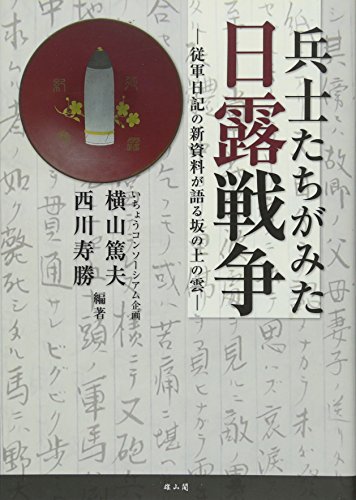- 著者
- 横山 篤夫
- 出版者
- 国立歴史民俗博物館
- 雑誌
- 国立歴史民俗博物館研究報告 (ISSN:02867400)
- 巻号頁・発行日
- vol.102, pp.11-95, 2003-03
本論文は、日本で最初に作られた軍隊の埋葬地、真田山陸軍墓地の沿革と、陸軍廃止後の墓地の変遷を考察したものである。第一章では先ず一八七一年に、陸軍創立の一環として真田山に兵隊埋葬地が設けられた経緯をとりあげて分析した。その際招魂社が同時に設けられたが、西南戦争後の大招魂祭が、真田山から離れた大阪城跡で開催され、以後真田山は墓地として特化した存在となり、墓域も拡大した。しかし日露戦争で予測を越える死者がでるに及んで、従来と同様の墓碑を建てるスペースが不足しはじめた。そこで合葬墓碑が階級別に建立されたものと思われる。さらに大阪市立真田山小学校が真田山陸軍墓地の敷地を一部使って建設された時、その敷地の墓碑移転に留まらず、相当大規模な墓地全体の改葬も行なわれた模様で、これが現在の景観の基本になったものと考える。その後一五年戦争が始まり、戦死者が増加すると個人墓碑ではなく合葬墓碑に一括して納骨されるようになった。そこでは階級別ではなくすべて一基の墓碑にまとめられた。その後忠霊塔を建設する運動がひろがり、真田山陸軍墓地には「仮忠霊堂」が木造で建設されたが、戦局の激化により本格的建設に至らず、そのまま「仮忠霊堂」が現在納骨堂として四万三千余の遺骨を納めている。空襲で被災はしたが、納骨堂は焼失を免れ、戦前の景観が戦後に引き継がれた。第二章では、戦後陸軍省が廃止された後の旧真田山陸軍墓地の祭祀と維持・管理を中心に、なぜ現在迄基本的に戦前の陸軍墓地の景観が保全されてきたのかを分析した。その際祭祀担当団体として組織された財団法人大阪靖国霊場維持会の変遷に注目して考察した。同時にそれとは全く別に戦後すぐに真田山陸軍墓地を舞台に、米軍機搭乗員殺害事件が憲兵隊によって惹きおこされた経過も、先行研究によって紹介した。また一九九五年度から開始された歴博の調査と研究者の呼びかけで始まった保存運動の意味にも論及した。This paper deals with the history of the first army cemetery in Japan at Sanadayama and the transitions undergone at the cemetery after the Japanese army was abolished.Chapter 1 presents an analysis of the circumstances surrounding the establishment of a burial ground for soldiers at Sanadayama in 1871 as part of an army-building strategy. On that occasion, a shrine dedicated to the spirits of the war dead (shokonsha) was also built on the same spot After the Seinan War, however, a great memorial service (shokonsai) for those killed in the war was held in a location away from Sanadayama, in the site of Osaka Castle. Since then, Sanadayama came to be regarded as being specifically a burial ground and the cemetery itself expanded over time. Nevertheless, as the Russo-Japanese War brought about an unexpected rise in the number of war dead, the cemetery began to run out of room to build the type of graves it had been building until that point. Therefore, it is thought, that communal graves according to rank were introduced. Furthermore, when the Osaka City Sanadayama Elementary School was built using some of the land belonging to the Sanadayama Army Cemetery, not only were the graves in that region transferred to other locations but a large-scale renovation of the entire cemetery, it seems, was carried out as well. This is believed to have formed the basis of the appearance we see today.Later on, as the "Fifteen-years War" broke out and the number of war dead increased even further, the remains of all of the deceased were buried in communal graves and individual graves were no longer used. These communal graves were not separated according to rank but gathered all the war dead under one grave. Still later, when it became popular to build a memorial monument for loyal war dead (chureito), a "provisional chureito" was built in wood at the Sanadayama Army Cemetery but the war situation intensified, preventing it from being rebuilt into a full-scale monument. The provisional monument serves as a repository containing the remains of over 43,000 people. Although the cemetery was struck by air raids, the repository was not burned and so the pre-war appearance was passed down to the post-war age. Chapter 2 focuses on the religious services and care and maintenance of the former Sanadayama Army Cemetery after the Department of the Army was abolished, analyzing the reasons why the appearance of the pre-war army cemetery has been preserved until now. The Osaka Foundation for the Preservation of Yasukuni Shrine was established in order to take charge of the religious services at Sanadayama. Special attention was paid to its transition.At the same time, the paper also makes reference to the process of a completely unrelated incident introduced in an earlier study, where the crew of a US plane was killed by the military police at the Sanadayama Army Cemetery, just after the war. Additional reference is made to the significance of the research on the Cemetery began in the academic year of 1995 by the National Museum of Japanese History and of the preservation movement started on the initiative of the researchers.
1 0 0 0 OA 旧真田山陸軍墓地変遷史(1. 陸海軍墓地)
- 著者
- 横山 篤夫
- 出版者
- 国立歴史民俗博物館
- 雑誌
- 国立歴史民俗博物館研究報告 = Bulletin of the National Museum of Japanese History (ISSN:02867400)
- 巻号頁・発行日
- vol.102, pp.11-94, 2003-03-31
本論文は、日本で最初に作られた軍隊の埋葬地、真田山陸軍墓地の沿革と、陸軍廃止後の墓地の変遷を考察したものである。第一章では先ず一八七一年に、陸軍創立の一環として真田山に兵隊埋葬地が設けられた経緯をとりあげて分析した。その際招魂社が同時に設けられたが、西南戦争後の大招魂祭が、真田山から離れた大阪城跡で開催され、以後真田山は墓地として特化した存在となり、墓域も拡大した。しかし日露戦争で予測を越える死者がでるに及んで、従来と同様の墓碑を建てるスペースが不足しはじめた。そこで合葬墓碑が階級別に建立されたものと思われる。さらに大阪市立真田山小学校が真田山陸軍墓地の敷地を一部使って建設された時、その敷地の墓碑移転に留まらず、相当大規模な墓地全体の改葬も行なわれた模様で、これが現在の景観の基本になったものと考える。その後一五年戦争が始まり、戦死者が増加すると個人墓碑ではなく合葬墓碑に一括して納骨されるようになった。そこでは階級別ではなくすべて一基の墓碑にまとめられた。その後忠霊塔を建設する運動がひろがり、真田山陸軍墓地には「仮忠霊堂」が木造で建設されたが、戦局の激化により本格的建設に至らず、そのまま「仮忠霊堂」が現在納骨堂として四万三千余の遺骨を納めている。空襲で被災はしたが、納骨堂は焼失を免れ、戦前の景観が戦後に引き継がれた。第二章では、戦後陸軍省が廃止された後の旧真田山陸軍墓地の祭祀と維持・管理を中心に、なぜ現在迄基本的に戦前の陸軍墓地の景観が保全されてきたのかを分析した。その際祭祀担当団体として組織された財団法人大阪靖国霊場維持会の変遷に注目して考察した。同時にそれとは全く別に戦後すぐに真田山陸軍墓地を舞台に、米軍機搭乗員殺害事件が憲兵隊によって惹きおこされた経過も、先行研究によって紹介した。また一九九五年度から開始された歴博の調査と研究者の呼びかけで始まった保存運動の意味にも論及した。
1 0 0 0 OA [研究ノート] 旧真田山陸軍墓地に建立された野田村遺族会の墓碑169基について
- 著者
- 横山 篤夫
- 出版者
- 国立歴史民俗博物館
- 雑誌
- 国立歴史民俗博物館研究報告 = Bulletin of the National Museum of Japanese History (ISSN:02867400)
- 巻号頁・発行日
- vol.82, pp.215-235, 1999-03-31
1 0 0 0 IR 総合演習でめざしたことと取り組んだこと
- 著者
- 横山 篤夫
- 出版者
- 天理大学人間学部総合教育研究センター
- 雑誌
- 総合教育研究センター紀要 (ISSN:1347975X)
- 巻号頁・発行日
- no.10, pp.101-116, 2011
1996年の中央教育審議会答申は,従来の反省を踏まえたゆとり教育の柱の一つとして総合的な学習の時間を設けることを提言した。 これをうけた学習指導要領の改定で,2002年度から総合的な学習の時間が学校で実施されることになり,各大学ではそのための教職に関する科目として総合演習が開講された。しかし実施されて間もなく「ゆとり重視の学習指導要領が学力低下を招く」とする批判論が強くなった。そのため文科省は見直しを指示し,2011年度から実施された新学習指導要領では総合的な学習の時間は削減された。その結果多くの大学では総合演習は廃止される。 こうした動向中2002年度から本学体育学部で総合演習を担当する機会を得た筆者が,この10年間にめざしたことと取り組んだことの概要とそこで考えたことを報告したい。
1 0 0 0 OA G-Vectoring制御を用いた横滑り防止装置の運動性能評価
- 著者
- 高橋 絢也 山門 誠 横山 篤 齋藤 真二郎
- 出版者
- 公益社団法人 自動車技術会
- 雑誌
- 自動車技術会論文集 (ISSN:02878321)
- 巻号頁・発行日
- vol.41, no.2, pp.195-200, 2010 (Released:2010-06-16)
- 参考文献数
- 8
- 被引用文献数
- 4
G-Vectoring制御による横加加速度に応じた減速度指令と,車両の横滑り情報からのヨーモーメント指令によりブレーキ制御を行う車両を構築し,圧雪路での性能試験を行った.横滑り情報からアンダーステアを検出し,旋回促進のモーメントを加える従来の制御に比べ,明らかな性能向上が確認できたので報告する.
1 0 0 0 兵士たちがみた日露戦争 : 従軍日記の新資料が語る坂の上の雲
- 著者
- 横山篤夫 西川寿勝編著
- 出版者
- 雄山閣
- 巻号頁・発行日
- 2012
